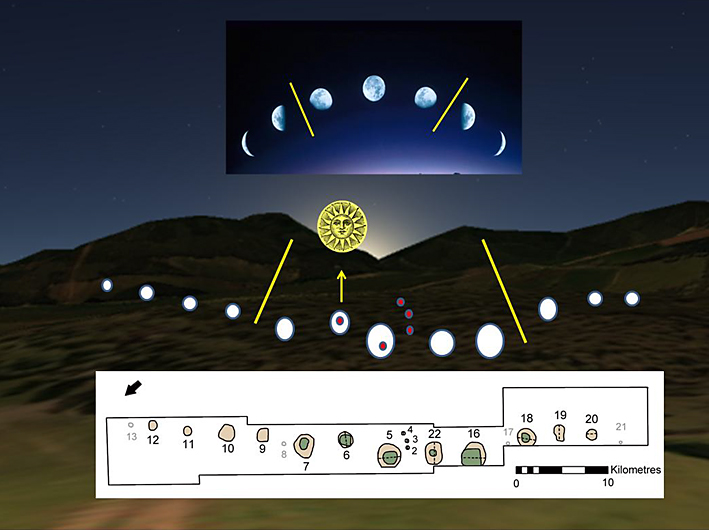Relating to Professor Alan Marscher’s recent lecture on ancient cosmology for CC105, an ancient astronomical calendar was found to be older than Stonehenge by six millennia this past summer. The 10,000 year old time keeping structure located at Warren Field is comprised of 12 pits with rocks that copy the lunar phases, all arranged in a 164 foot arc.
It is thought that around this time the most recent ice age had finally come to a close. What is believed to be the first agrarian societies were just starting to appear in the Fertile Crescent (presumably the first were the Natufians). Yet the existence of this calendar puts all of these assumptions into question. Hunter-gatherer groups would have had no practical need to develop a calendar but for agrarian societies it was essential technology. Without being able to tell the time of year, knowing when to plant and harvest the crop would have been made impossible. This discovery raises many questions about our current theories but notably: were agrarian societies developing in places outside of Mesopotamia such as Scotland in 8,000 B.C.?
Read more at Universe Today and NPR.


One Comment
Heath Anderson posted on September 8, 2013 at 3:50 pm
Cool post, thanks for getting archaeology news into the Core stream.
But be careful! It’s not necessarily true that hunter-gatherers wouldn’t have use for timekeeping devices like this. Depending on how clustered/dispersed, predictable/unpredictable, and defensible/indefensible resources were in a given area, H/Gs might have derived considerable benefit from keeping track of time. Beyond that, we know that scheduled macroband celebrations were important for ethnographically known H/Gs as occasions for reaffirming community ties, access to marriage partners, etc.
People have needed to eat and have liked to party for a long time. No agriculture necessary. 🙂